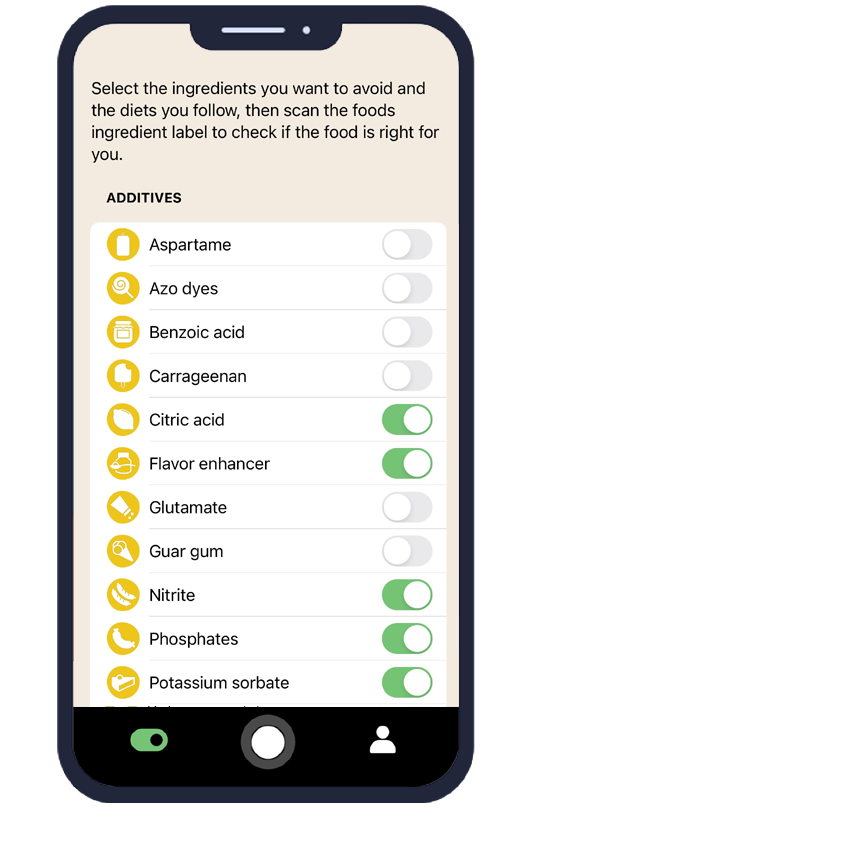Everything You Need to Know About Glutamate and How AI Eat This Can Help
Glutamate is one of the most widely used food additives in the modern food industry, yet many consumers remain unaware of its presence in their daily meals. Whether you're dealing with specific dietary restrictions, food sensitivities, or simply want to make more informed food choices, understanding Glutamate and where it appears is crucial for your health journey.
For those seeking to avoid Glutamate in their diet, identifying this additive can be challenging, especially when ingredient lists are complex or written in different languages. This is where AI Eat This becomes an invaluable tool, using advanced artificial intelligence to scan and identify food additives instantly, helping you make safer dietary choices with confidence.
What Is Glutamate and Where Is It Used?
Glutamate, also known by its E-number E621, is a flavor enhancer that occurs naturally in many foods and is also produced synthetically for use in processed foods. This food additive works by stimulating taste receptors on the tongue, creating what scientists call the "umami" or savory taste that makes foods more appealing and flavorful.
The food industry extensively uses Glutamate because of its ability to enhance existing flavors without adding its own distinct taste. You'll commonly find this additive in processed meats, canned soups, frozen meals, snack foods, and restaurant dishes. Many Asian cuisines traditionally incorporate Glutamate-rich ingredients, making it particularly prevalent in soy sauce, fish sauce, and various seasoning blends.
Common Foods Containing Glutamate
Understanding where Glutamate commonly appears can help you make more informed food choices. Here are the most frequent sources:
- Processed and packaged soups, broths, and bouillon cubes
- Frozen dinners and ready-to-eat meals
- Snack foods like flavored chips and crackers
- Processed meats including sausages and deli meats
- Asian condiments and sauces
- Restaurant foods, particularly fast food and Asian cuisine
- Salad dressings and marinades
Is Glutamate Safe? What Does the Research Say?
Regulatory Approvals and Guidelines
Major health authorities worldwide have extensively studied Glutamate safety and established clear guidelines for its use. The U.S. Food and Drug Administration (FDA) classifies Glutamate as "Generally Recognized as Safe" (GRAS) for use in foods. Similarly, the European Food Safety Authority (EFSA) has approved its use after comprehensive safety evaluations.
The World Health Organization (WHO) has also reviewed extensive research on Glutamate and concluded that it poses no health risks when consumed at typical dietary levels. These regulatory bodies continuously monitor food additives and update their recommendations based on the latest scientific evidence.
Risks for Specific Groups
While Glutamate is generally considered safe for most people, some individuals may experience sensitivity or intolerance to this additive. Glutamate intolerance can manifest as headaches, nausea, sweating, or chest discomfort in sensitive individuals. Though true Glutamate allergy is extremely rare, some people choose to avoid it due to personal dietary preferences or medical recommendations.
People following specific dietary restrictions, such as those managing certain neurological conditions or individuals with histamine intolerance, may also benefit from limiting their Glutamate intake. Consulting with healthcare providers can help determine if avoiding this food additive is necessary for your specific health needs.
How AI Eat This Helps You Avoid Glutamate
Managing dietary restrictions becomes significantly easier with the right tools, and AI Eat This revolutionizes how consumers identify problematic ingredients. This innovative mobile app uses advanced artificial intelligence to scan ingredient lists through your smartphone camera, instantly identifying Glutamate and other food additives regardless of the language on the packaging.
The app's personalized filter system allows users to set specific dietary preferences, automatically flagging products containing Glutamate before purchase. Whether you're shopping in your local grocery store or traveling abroad, AI Eat This provides real-time ingredient analysis that takes the guesswork out of food selection.
What sets AI Eat This apart is its comprehensive database that recognizes Glutamate under all its various names and E-numbers, including regional variations and alternative terminology. The app also provides detailed information about why certain ingredients might be problematic for your specific dietary needs, helping you make educated decisions about your food choices.
Who Should Consider Avoiding Glutamate?
Several groups of people may benefit from avoiding or limiting Glutamate in their diet. Individuals with diagnosed Glutamate intolerance should carefully monitor their intake to prevent uncomfortable symptoms. Those following elimination diets or working with healthcare providers to identify food triggers may also need to avoid this additive temporarily.
Parents of children with certain behavioral sensitivities sometimes choose to eliminate Glutamate from family meals, though scientific evidence for behavioral effects remains limited. Additionally, people following whole food or clean eating approaches often prefer to avoid synthetic food additives, including Glutamate, as part of their overall dietary philosophy.
Tips for Following a Glutamate-Free Diet
Successfully avoiding Glutamate requires a combination of label reading skills, food knowledge, and the right tools. Start by focusing on whole, unprocessed foods like fresh fruits, vegetables, lean meats, and whole grains, which naturally contain minimal added Glutamate.
When shopping for packaged foods, always read ingredient lists carefully, looking for Glutamate, MSG, E621, and other related terms. Consider preparing more meals at home where you have complete control over ingredients, and when dining out, don't hesitate to ask restaurant staff about ingredient lists and food preparation methods.
Utilizing technology like nutrition databases and ingredient scanning apps can significantly streamline this process. Keep a list of Glutamate-free brands and products that you've verified as safe, making future shopping trips more efficient and less stressful.
Conclusion
Understanding Glutamate and its presence in our food supply empowers consumers to make informed dietary choices that align with their health goals and dietary restrictions. While this food additive is generally safe for most people, those with sensitivities or specific dietary preferences deserve tools that make avoidance simple and reliable.
AI Eat This provides the technological solution that modern consumers need to navigate complex ingredient lists and maintain their chosen dietary restrictions with confidence. By combining comprehensive ingredient recognition with personalized filtering, the app transforms the challenge of avoiding Glutamate into a simple, manageable task.
Take control of your dietary choices today and experience the peace of mind that comes with knowing exactly what's in your food. Download AI Eat This for free testing today and discover how technology can support your journey toward better health and nutrition!

70 filters
With over 70 filters, you can easily avoid certain ingredients and follow your dietary preference.

Paleo

Pescetarian

Ultra-processed food

Vegan







































































